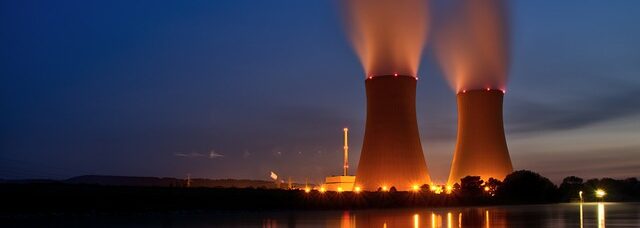South Korea has officially confirmed its 11th Basic Power Supply and Demand Plan, a long-term strategy to expand nuclear capacity and meet the nation’s growing electricity demand. Covering the period from 2024 to 2038, the plan includes the construction of two new large-scale nuclear reactors and a small modular reactor (SMR) while supporting ongoing and future energy projects.
Rising Electricity Demand Fuels Nuclear Expansion
The Ministry of Trade, Industry, and Energy projects that South Korea’s electricity demand will grow at an average rate of 1.8% annually, reaching 129.3 gigawatts (GW) by 2038—a more than 30% increase compared to 2023. This surge is driven primarily by the rapid expansion of high-tech industries, particularly in artificial intelligence and semiconductor manufacturing, which require stable and substantial energy supplies.
Strengthening Nuclear Power’s Role
To meet this rising demand, South Korea plans to increase nuclear power generation from 180.5 terawatt-hours (TWh) in 2023 to 248.3 TWh in 2038. As a result, the share of nuclear energy in the country’s power mix will grow from 30.7% to 35.2%.
Currently, 26 operating reactors provide about one-third of South Korea’s electricity. The expansion strategy builds upon the completion of five reactors already under development, including:
- Shin Hanul 2, which began commercial operation in April 2024
- Saeul 3 and 4
- Shin Hanul 3 and 4
These projects will collectively add 7 GW of new nuclear capacity, reinforcing the country’s commitment to a stable and low-carbon energy supply.
Pioneering Small Modular Reactors
Alongside large-scale reactors, South Korea is advancing small modular reactor (SMR) technology, aiming to integrate 0.7 GW of SMR capacity by 2038. The government anticipates domestic SMR commercialization by 2035, pending technological advancements and regulatory approvals. SMRs are expected to play a crucial role in diversifying the energy mix and enhancing grid flexibility.
Energy Transition and Diversification Goals
As part of its broader energy strategy, South Korea aims to reduce coal’s share of electricity generation from 31.4% in 2023 to just 10.1% by 2038. Simultaneously, the country is ramping up renewable energy investments, targeting 7 GW of new renewable capacity annually by 2030. By 2038, renewables are expected to account for 29.2% of the country’s electricity generation, up from 8.4% in 2023.
Strategic Policy Shift Under President Yoon Suk-yeol
This energy strategy aligns with the policies of President Yoon Suk-yeol, who has actively revitalized South Korea’s nuclear industry. His administration marks a policy shift from the previous government, led by former President Moon Jae-in, who initiated a gradual nuclear phase-out in 2017 following the 2011 Fukushima disaster. Under Yoon’s leadership, South Korea is reaffirming its commitment to nuclear power as a pillar of energy security, economic growth, and carbon reduction.
By expanding both conventional nuclear reactors and next-generation SMRs, South Korea is positioning itself as a global leader in clean, stable, and high-capacity energy production.
